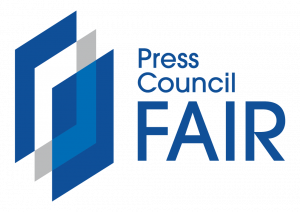
With the abundance of cables landing on SA’s shores, you could be forgiven for thinking it’s one the most connected countries in the world. In a sense, it soon will be: there’s no shortage of international capacity on the way. What’s lacking is widespread local access to take advantage of it.
The problem isn’t without solutions, but it’s going to take the work of both the private sector and government to solve it.
With the West African Cable System (Wacs) set to go live next month and Ace (Africa Coast to Europe), SAex (South Atlantic Express) and the newly announced Brics Cable to follow, SA is rapidly becoming spoilt for choice in international bandwidth. Yet the fastest private fixed-line product is still only 10Mbit/s — and then only in selected areas and at high cost.
One of the bottlenecks is national fixed-line operator Telkom’s ageing copper network. Copper has limitations — the longer the loop lengths to the telephone exchange, the slower the connection. If the international cables are highways, Telkom’s copper network looks like a collection of dirt roads.
Telkom is starting to work to address this, building new fibre access nodes in suburbs that will shorten the local loop and deliver higher speeds to consumers, possibly as high as 80Mbit/s over copper.
But copper is living on borrowed time: eventually, the fixed local loop will have to be replaced with fibre, with its potential to offer broadband measured in gigabits per second.
There are the private fibre operators that are building alternative national fibre networks to the one controlled by Telkom. These are the metropolitan and intercity links rather than the ones into homes. FibreCo, backed by Cell C, Internet Solutions and Convergence Partners, is one of these. Another is Dark Fibre Africa.
For consumers, it doesn’t matter whether it’s the incumbent or a newcomer who offers them higher-speed services, as long as some one does, and as long as the price is right. But to date no players into the market are offering commercial fibre-to-the-home (FTTH) services.
Of course, FTTH is not the only way to increase SA consumer and business access to international bandwidth, particularly as many regions outside of metropolitan areas have limited fixed-line infrastructure where none may ever be built. For them, the answer lies in next-generation mobile broadband based on fourth-generation (4G) systems like long-term evolution, or LTE.
Local-loop unbundling, whereby Internet service providers are given access to Telkom’s last-mile infrastructure in some or other form, is another crucial step in increasing the demand for bandwidth.
Unbundling is expected to increase competition between fixed-line service providers, reducing costs in the process and — by making broadband more affordable — driving up demand. The first, limited step in the unbundling process, called “bit-stream” access, is meant to be in place by November. The high cost of maintaining Telkom’s local loop — and the fact that service providers will have to help Telkom pay for the money it loses on the average line in service — could prove a stumbling block to radical changes in pricing for consumers.
And unbundling is of no use to those outside of metropolitan areas. Here, 3G and 4G networks are essential and opening up new radio frequency spectrum in the most efficient way is crucial and urgent.
The debate about how 4G spectrum should be allocated — particularly in the digital dividend bands that will be freed up when the country switches off analogue television broadcasts — rages on. Until it’s resolved, operators simply won’t be able to offer next-generation connectivity.
With Seacom, Sat-3, and Eassy already supplying bandwidth to SA — and Wacs about to launch — the focus needs to shift to getting local demand to meet the growing supply. But this is probably going to be the most difficult hurdle to overcome.
Demand will not only drive down the price of connectivity and increase the number of people that can get access to it, but will also make SA a more viable outsourcing destination and help establish the country more strongly as a technology hub.
There’s no doubt that increased connectivity boosts GDP. It also fosters innovation. SA isn’t short of good ideas and it’s no longer short of international bandwidth. What’s missing is the link between the two. — (c) 2012 NewsCentral Media
- Craig Wilson is senior journalist at TechCentral

